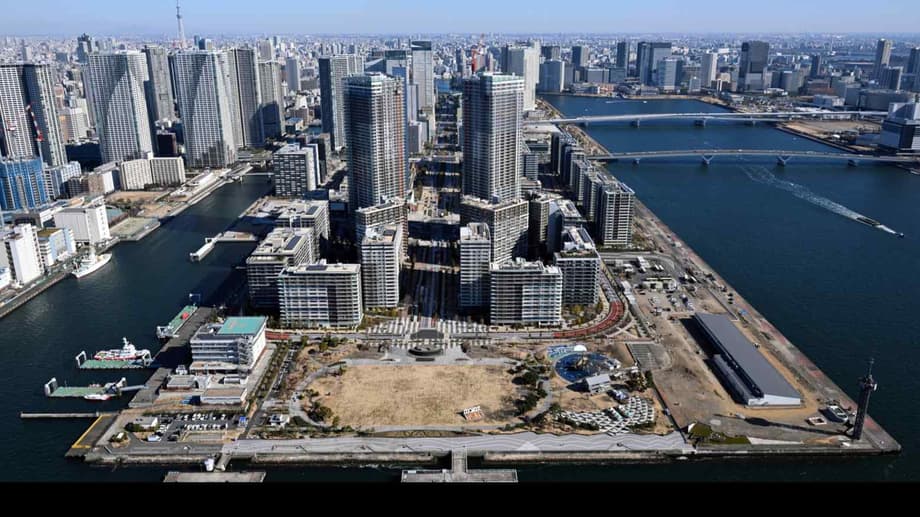Why existing condos are getting more expensive in Tokyo
Prices for existing condominiums across Tokyo are climbing at a faster pace as buyers migrate from new construction to preowned homes. A tight pipeline of new projects, higher construction and land costs, and strong demand from both domestic and overseas buyers have made brand new apartments exceptionally expensive. Many households that would have bought new are now opting for resale, which has tightened the secondary market and pushed up closing prices and price per square meter.
- Why existing condos are getting more expensive in Tokyo
- New supply dries up, buyers pivot to resale
- What the data shows on preowned prices and sales
- Affordability squeeze and the buyer experience
- Finance, interest rates, and the role of foreign buyers
- What buyers and sellers are doing now
- How building age, standards, and management affect value
- What could change in the months ahead
- Key Points
Fresh figures illustrate how widespread the shift has become. According to market data for June 2025 from the Real Estate Information Network for East Japan (REINS), existing condominium transactions across the Greater Tokyo Area rose to 4,299 units, up 31.9 percent compared with a year earlier. The average price per square meter reached 833,400 yen, 6.9 percent higher year on year, marking the 62nd straight month of price growth. Average transaction value came in at about 52.09 million yen. At the same time, on market inventory fell 0.7 percent to 44,428 units, the fourteenth monthly decline, even as new listings ticked up slightly.
The pull from the resale market is directly connected to extreme pricing at the new build end, especially in central Tokyo. Industry trackers report that the average price of a newly built apartment in the 23 wards exceeded 100 million yen for a second year, with the 12 months through March 2025 averaging around 116.3 million yen. New apartment pricing in core districts is also very high on a per square meter basis, close to 1.7 million yen. These price levels reflect land scarcity in prime neighborhoods, elevated construction and labor costs, and a development pipeline tilted toward luxury towers designed for affluent local and foreign buyers.
Supply constraints have deep roots. The number of newly launched condominium units across Greater Tokyo fell about 17 percent in 2024 to the lowest level since 1973, and the limited inventory has carried into 2025. Even where developers have released more units in suburban locations, absorption remains firm and does little to relieve price pressure in central districts. The result is a growing gap between what many buyers can afford in new construction and what is available, which makes the preowned market the focal point for family buyers.
New supply dries up, buyers pivot to resale
Developers are facing higher input costs and a shortage of suitable sites in neighborhoods with strong transport links, schools, and services. Land assembly in central wards is complex and time consuming. Construction costs rose during and after the pandemic as materials, logistics, and wages moved higher. When projects pencil out at higher prices, launch pricing follows. The shift toward high specification projects with concierge, amenities, and branded residences has reinforced the tilt toward luxury, raising headline averages and sidelining mid market buyers.
There was a modest dip in the average price of new units across the broader metro in 2024 as the sales mix normalized after a surge of luxury launches in 2023. The average price of a new apartment across the metropolitan area slipped about 3.5 percent to roughly 78 million yen. In central Tokyo, the average new unit price eased to about 112 million yen. Analysts argue this is a pause rather than a pivot in the long run trajectory because the fundamental drivers, limited new supply and higher build costs, remain in place.
Tetsuya Kaneko, head of research at Savills Japan, cautioned against reading too much into the one year dip in metro wide new build averages in 2024.
We should not see the temporary decrease as a peak. The general upward trend is here to stay, especially considering the overall inflationary trend and labor shortage.
For households that want to stay in the city and are priced out of new builds, preowned apartments have become the practical route. Renovated units often match the feel and function of new construction. Many buyers target remodeled older buildings that meet modern earthquake standards, especially those located near stations and schools in the 23 wards.
What the data shows on preowned prices and sales
The long run trend already favored the resale market even before 2024. Transaction data from earlier years shows a clear decade long climb in prices for existing condos in the Tokyo metropolitan area. Average sale prices in 2022 reached about 42.76 million yen, up more than 10 percent from the prior year, while average price per square meter rose to roughly 672,400 yen. Over the past decade, the per square meter price of preowned condos in the region increased by more than 70 percent. Low borrowing costs, a preference for city living, and a steady improvement in the quality of housing stock supported that move.
Recent monthly figures indicate that momentum has not slowed. In June 2025, REINS reported a broad rise in activity across the Greater Tokyo Area, which includes Tokyo, Kanagawa, Chiba, and Saitama. Sales in Tokyo proper rose nearly 30 percent year on year, while Saitama led growth with a rise of more than 47 percent. Average unit size transacting was about 62.5 square meters, a bit smaller than a year earlier, while the average age of buildings sold rose to roughly 27 years. That shift toward older, slightly smaller homes is one way buyers are stretching budgets within preferred locations.
Where the growth is strongest
Tokyo accounted for 2,360 existing condo transactions in June, up 29.8 percent compared with a year earlier. Kanagawa saw 1,003 deals, up 40.5 percent. Saitama recorded 509, up 47.1 percent, while Chiba reached 427, up 12.1 percent. On the pricing side, the Greater Tokyo average price per square meter climbed 6.9 percent to 833,400 yen, the 62nd consecutive monthly increase. Inventory has been trending lower for more than a year, a sign that demand is outpacing the pace at which owners are bringing units to market.
The pattern reflects a simple reality. Buyers who cannot or will not pay the price premiums attached to new builds in prime wards are still committed to owning in the city. They are bidding up well located, renovated units in older buildings, and many are willing to sacrifice space or accept a longer commute to keep the price in reach. That mix of trade offs has reshaped the middle of the market.
Affordability squeeze and the buyer experience
The affordability gap between new and resale is striking. In early 2025, the average asking price for a standard 70 square meter resale apartment in metropolitan Tokyo was around 69.8 million yen. That compares with an average of roughly 116.3 million yen for newly built units across the 23 wards over the most recent twelve month period. Analysis of transactions over the past decade suggests that existing apartments have typically traded about 45 percent below the price of new construction. The gap shifts by location and building quality, but the direction is clear.
For many family buyers, the wish list sounds simple. Three bedrooms, at least 70 square meters, a safe neighborhood within commuting distance, and a building that meets modern earthquake standards. Prices for such homes in central wards have moved far beyond what many households can finance. In Bunkyo, Setagaya, and Minato, even older units of that size have reached levels that stretch household budgets. The search then widens to outer wards or nearby prefectures, or toward smaller units in the same neighborhoods.
Understanding earthquake standards is crucial. Japan raised its seismic code in 1981, often referred to as the new standard. Buildings completed from the early 1980s onward are more likely to meet that benchmark. Buyers also pay attention to the 2000 update to the Building Standards Act, which added stricter rules for structural design. Apartments meeting these standards can command a premium in the resale market. Renovated units in older, well maintained buildings with strong management associations also appeal to buyers who want modern interiors without paying new build prices in the same area.
At the upper end, the luxury segment has amplified averages. A recent penthouse sale in a boutique development near Harajuku reportedly cleared at more than 9.5 billion yen, a national record on a price per tsubo basis. A tsubo is a unit of area equal to 3.3 square meters. Such trophy deals are rare but they underscore the willingness of wealthy buyers to pay for prime locations, amenities, and privacy. They also highlight how the mix of units on the market can swing headline averages from year to year.
Finance, interest rates, and the role of foreign buyers
Financing costs remain supportive for buyers. The Bank of Japan has nudged policy rates higher from near zero, but mortgage costs are still low by global standards. Popular fixed rate products such as Flat 35 have hovered near the mid 1 percent range this year. Banks continue to compete aggressively for home loan customers, which has kept lending spreads tight. That has helped buyers stretch for resale units, even as price per square meter keeps rising.
Mari Kumagai, head of Japan research at Cushman and Wakefield, noted that a modest increase in policy rates will not necessarily force mortgage costs sharply higher for buyers.
An interest rate increase would be seen as negative, but its magnitude is offset by the competition among banks.
Foreign capital has also played a role. The weak yen has made Tokyo property more affordable when viewed in dollars or other major currencies. Overseas buyers have remained active in central districts, particularly for higher end condos. For investors, low vacancy, rising rents in core wards, and the perception of Tokyo as a safe market have made residential property an attractive asset. Rising participation at the luxury end does not set the price of resale apartments across the city, but it influences the top of the range and supports confidence among developers planning new projects.
Japan’s central bank has warned lenders to manage exposure to speculative activity as property prices rise. In a recent publication, the Bank of Japan urged caution on certain types of real estate lending with cross border elements.
Banks must be careful to manage risks associated with exposure to international investors buying property here.
Closer scrutiny of risk does not equate to a clampdown on mortgages for households, and there is no indication of a credit squeeze in mainstream home lending. It does show that policymakers are tracking the real estate cycle closely and are alert to potential vulnerabilities if global funding costs rise or if the yen moves sharply.
What buyers and sellers are doing now
Buyers have become more flexible about size and age. Closing data suggests a gradual tilt toward slightly older and smaller units, especially in stationside locations that cut commute times. Many buyers are prioritizing renovated interiors and strong building management over large floorplates. The rise of professional renovators who acquire, remodel, and resell older condos has expanded the pool of ready to move in options in popular neighborhoods.
Sellers of well located, well renovated units are testing higher asking prices. Homes that are priced in line with recent comparable sales, and that present well with recent renovations and clear documentation on building maintenance, are attracting multiple offers. By contrast, units that need significant work or sit far from stations are seeing longer time on market, even in a hot environment. The gap between best in class units and less appealing homes has widened.
How building age, standards, and management affect value
Age alone does not determine price in Tokyo’s condo market. Many buildings from the 1980s and 1990s have undergone major repairs and are well run by active owners associations. Buyers often check a building’s reserve fund balance, the history of repairs, elevator status, and planned works. A healthy reserve fund and a clear plan for future maintenance can support pricing. Buildings that recently completed large scale repairs, such as facade and waterproofing, can carry a premium, because buyers expect fewer special assessments in the near term.
Earthquake standards are a clear dividing line. Properties completed under the 1981 standard, and especially those designed after the 2000 update, tend to transact at higher prices per square meter, all else equal. Lenders also view these buildings more favorably, which can make financing easier and broaden the pool of bidders. Older buildings that do not meet the standard can still sell, particularly in excellent locations, but pricing will reflect the added risk and the potential cost of upgrades.
What could change in the months ahead
Most analysts expect Tokyo condo prices to keep rising in 2025, though at a calmer pace than the past two years. The resale segment is likely to remain tight as long as new supply is constrained and borrowing costs stay low. Watch for any acceleration in the number of new projects launched by developers, especially if costs stabilize. The currency will continue to influence foreign participation. Yen strength could cool inbound demand, while further weakness could extend the foreign bid in prime wards.
Domestic factors will matter too. Wage growth, bonus trends, and job security influence how much households can stretch for home purchases. If incomes continue to grow modestly, the resale market should remain supported, even as affordability remains a challenge for families seeking larger units in central districts. For now, the balance of evidence points to further price gains for existing condos, backed by persistent demand and limited alternatives on the new build side.
Key Points
- Existing condo transactions in Greater Tokyo jumped 31.9 percent in June 2025, with price per square meter up 6.9 percent and 62 months of continuous gains.
- New condo launches fell about 17 percent in 2024 to the lowest since 1973, keeping supply tight and pushing buyers into the resale market.
- Average new unit prices in the 23 wards hovered around 116.3 million yen over the past year, while a typical 70 square meter resale asking price was near 69.8 million yen.
- Inventory of existing condos fell for the 14th straight month in June, even as new listings rose slightly.
- Low mortgage rates, a weak yen, and continued urban demand are supporting prices, while the Bank of Japan urges lenders to manage real estate risk carefully.
- Buyers are accepting smaller or older units to stay in preferred locations, with renovated homes in buildings meeting modern earthquake standards commanding premiums.
- Analysts expect further, possibly slower, price increases for preowned condos in 2025, unless a significant rise in new supply or a sharp change in financing conditions alters the balance.




